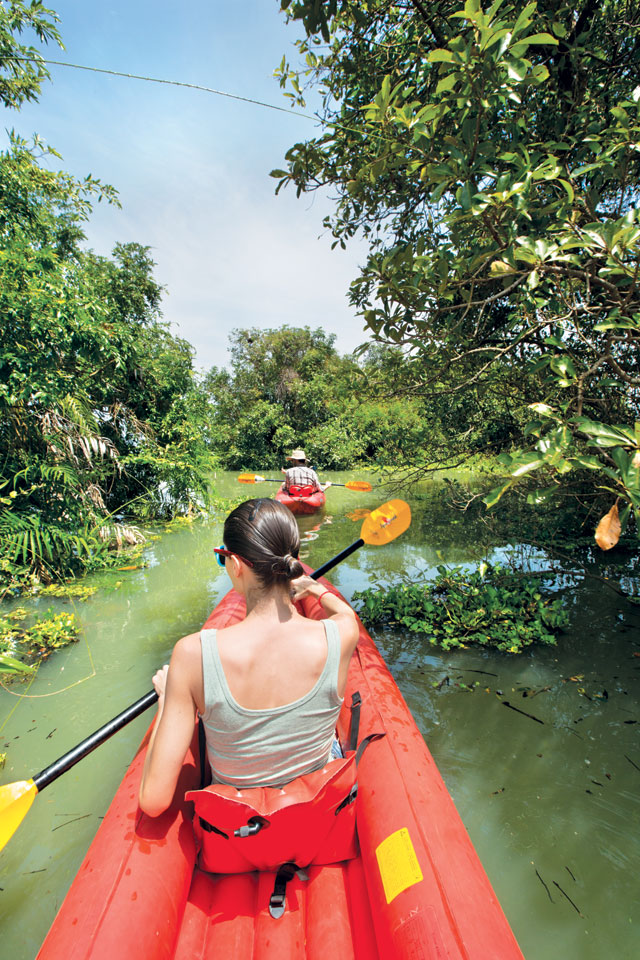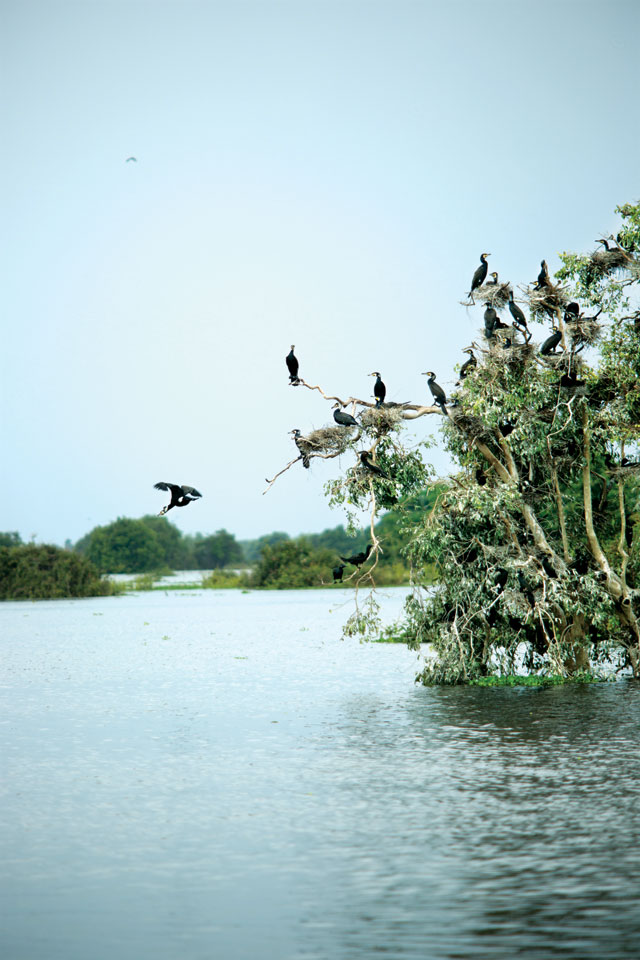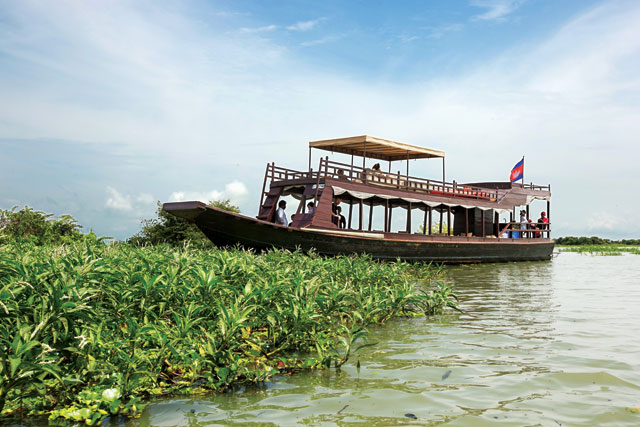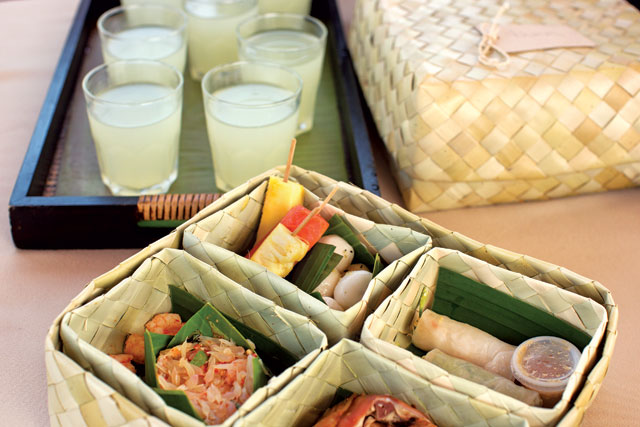Journey into the flooded forests and floating villages of Prek Toal
By Daniel Otis
Within the sanctuary, the water shifts from muddy brown into something clear and dark like obsidian. The calm water reflects towering cumulonimbus clouds, and everywhere, the green tops of submerged Diospyros and Barringtonia trees are like islands swarming with life.

Buntha Chheang, a local conservationist and guide, points out a dazzling orange and blue Stork-Billed Kingfisher just before it darts into the camouflage of another tree. “When it comes to large aquatic birds, this is the most important breeding ground in all of Southeast Asia,” he says.
We’re in the depths of the Prek Toal Bird Sanctuary, a watery 213-square-kilometre refuge to more than 200 bird and reptile species, and one of Cambodia’s best-preserved tracts of wilderness. The sanctuary sits at the northwestern edge of the Tonle Sap, a lake whose surface area dramatically expands from about 2,500-square-kilometres to more than three times that size between the dry and rainy seasons. The lake, which yields more than half of all the fish caught in Cambodia, is Southeast Asia’s largest and a Unesco Biosphere Reserve.
“In January and February, Prek Toal is like the Serengeti,” says Nick Butler, the British co-founder of outdoor tour company Indochine Exploration. “It’s astounding. More than 50,000 birds come to roost in the flooded forest, including the extremely rare Greater Adjutant and the Black-Headed Ibis. It’s like something out of Hitchcock!”

We take in the tranquil beauty of the flooded forest from the Amanbala, a traditional Cambodian passenger boat retrofitted by Siem Reap’s luxurious Amansara resort with plush day beds and a canopied rooftop divan. Binoculars and field guides are placed throughout the vessel to help passengers catch glimpses of species such as the swift Grey-Headed Fish Eagle and the elusive Masked Finfoot. Amansara’s charming staff serves meals, drinks and snacks.
The Amanbala pulls near a tree house: the only man-made object visible in all directions. The two-tiered structure is a simple affair, constructed from wood and bamboo, with a small kitchen-cum-landing at the bottom, and another tarpaulin-covered platform at its top. This second platform, reached by a steep ladder, is equipped with a telescope, a solar panel and a radio. At any given time, two forest rangers reside here, guarding the sanctuary in ten-day shifts. Several such tree houses dot the sprawling reserve.

“The sanctuary is probably the most successful conservation project in Cambodia,” Butler says. “By stopping people from stealing eggs, the rangers have caused bird numbers to explode. Since the area became protected in 1992, the population of Oriental Darters, for example, has grown from 2,000 individuals to 20,000.”
Veteran ranger Chum Savuth points the telescope at a cluster of nearby trees where hundreds of jet-black Indian Cormorants and slender Oriental Darters nest side by side. The birds cling to the trees’ bare branches, clucking, swaying and tending to their young.
“It’s so peaceful living here,” Savuth says. “I love working to protect this place.”

Back on the boat, we chug past patches of water hyacinth and lianas decorated with delicate yellow blossoms. Once we’ve left the sanctuary’s strictly protected core, we launch kayaks into this watery wilderness: a world silent save for rustling leaves and occasional bird cries.
As we paddle, the forest slowly gives way to Prek Toal village, where 1,200 families live in wood, thatch and corrugated iron houses that float on bamboo pontoons and oil drums. The village is one of 170 such floating settlements on the lake.
The houses here are moored to trees and loosely arranged around a Buddhist temple and research centre, both raised high on cement pillars. The waterborne village has all the amenities of a small town: mobile phone shops, karaoke parlours and even a petrol station. Fruit and drink vendors paddle from house to house, while teenagers in long-tailed speedboats zip past swimming children. There’s a boat builder too, as well as a workshop where dried water hyacinth stems are woven into souvenirs. Several households also raise fish and crocodiles in cages tethered to their homes, but sadly the latter are nearly extinct in the wild.
After touring the village, we return to the Amanbala and enter the open waters of the Tonle Sap. A delicious light lunch is served in hand-woven baskets on the vessel’s roof, where we gaze at the shimmering brown expanse of a lake that stretches to the edges of the horizon.
***
Accessible between September and mid-March, the Prek Toal Bird Sanctuary makes for an easy day trip from Siem Reap. For more information on visiting the site, contact Indochine Exploration or the Amansara resort.
